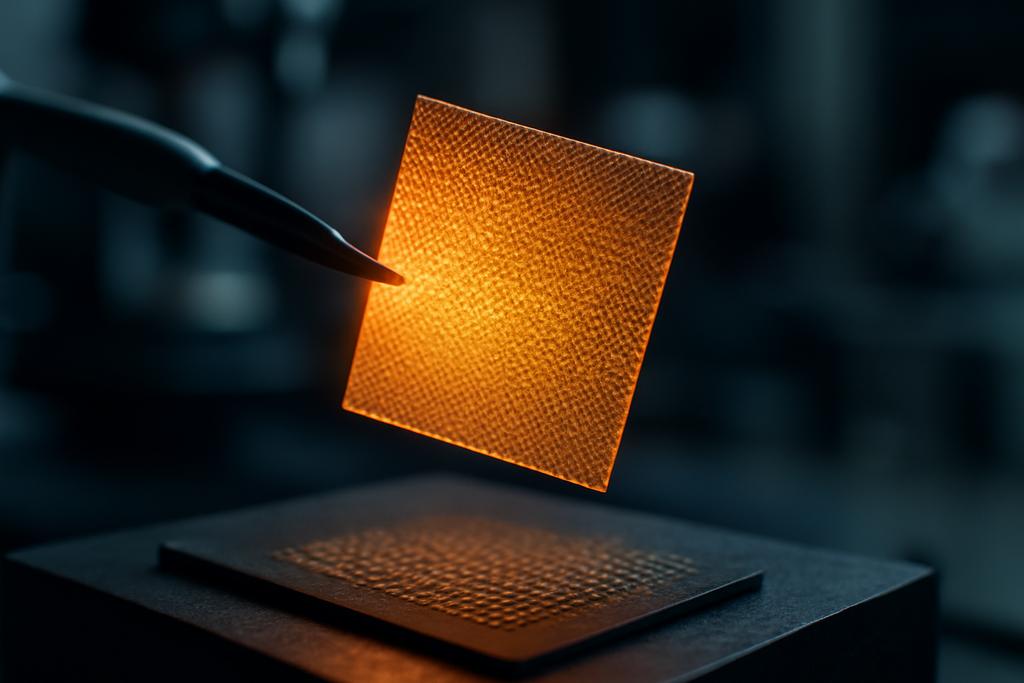Imagine materials so precisely engineered, they can capture light with an almost supernatural efficiency. This isn’t science fiction; it’s the cutting edge of materials science, and a team at Mahindra University in Hyderabad, India, has just made a monumental leap forward.
Rewriting the Rules of Light
The researchers, led by Sreeraj Rajan Warrier and Jayasri Dontabhaktuni, have developed a groundbreaking new method for designing metasurfaces—artificial materials with extraordinary optical properties. These aren’t simply tweaked existing materials; they’re entirely new creations, engineered at the nanoscale to manipulate light in ways never before possible. Think of it as composing a symphony of light, using carefully arranged nanostructures as instruments.
The challenge has always been the immense complexity involved. Designing these metasurfaces requires navigating an incredibly intricate landscape of variables—geometry, material composition, and electromagnetic interactions—to achieve a precise optical response. Traditional methods are like searching for a needle in a cosmic haystack, demanding massive computing power and offering no guarantee of success.
Quantum Computing: A New Tool for Nanodesign
The Mahindra University team tackled this problem head-on by harnessing the power of quantum computing. Their innovation lies in a hybrid quantum-classical approach they call LaSt-QGAN (Latent Style-based Quantum GAN). This cleverly combines the strengths of classical and quantum computing to create an unprecedentedly efficient design process. It’s like having a supercharged computer assisted by a quantum oracle.
The LaSt-QGAN leverages a technique called Generative Adversarial Networks (GANs) in a novel way. These networks work through a kind of creative competition between two AI components: a generator that proposes designs and a discriminator that judges their quality against a target. Think of it as an artistic apprenticeship, with the generator striving to create a masterpiece, and the discriminator providing critical feedback.
The quantum aspect speeds this process dramatically. By incorporating quantum algorithms into the GAN, the researchers significantly accelerated the design process and drastically reduced the need for massive datasets. LaSt-QGAN accomplished what previously took days in mere hours.
Beyond Efficiency: High-Q Resonances and Material Innovation
The efficiency gains aren’t the only story. The LaSt-QGAN also unlocked a capacity to design high-Q factor metasurfaces. The Q factor essentially represents the sharpness of a material’s response to light; a high Q means exceptionally precise control over the interaction. This allows for extremely narrowband absorption – essentially, filtering out only specific wavelengths of light, akin to perfectly tuning a radio to a single station.
Furthermore, the system goes beyond simply proposing ideal material properties. It incorporates a “material look-up table,” allowing it to swap hypothetical materials generated in the simulation for real-world alternatives, ensuring the designs are actually manufacturable. This is like translating a dream design into concrete instructions for construction, bridging the gap between theoretical possibility and practical reality. The researchers reported a 95% fidelity rate between designs predicted and those realized using real-world materials.
The Implications
The implications of this work are far-reaching. These precisely engineered metasurfaces could revolutionize various fields. In solar energy, they could lead to more efficient solar cells capable of capturing a broader spectrum of sunlight. In sensing, the narrowband absorption could create highly sensitive detectors, able to identify specific molecules or substances. Applications in telecommunications and imaging are also readily imaginable.
Ultimately, LaSt-QGAN demonstrates the power of a hybrid approach, blending the best of both classical and quantum computing. It is a testament to the collaborative potential between seemingly disparate fields, showcasing how innovations in computer science can profoundly impact our ability to design materials with extraordinary properties. The work suggests a future where material design is no longer a painstaking process of trial and error, but a precise and efficient engineering feat enabled by the power of artificial intelligence and the promise of quantum computing.










